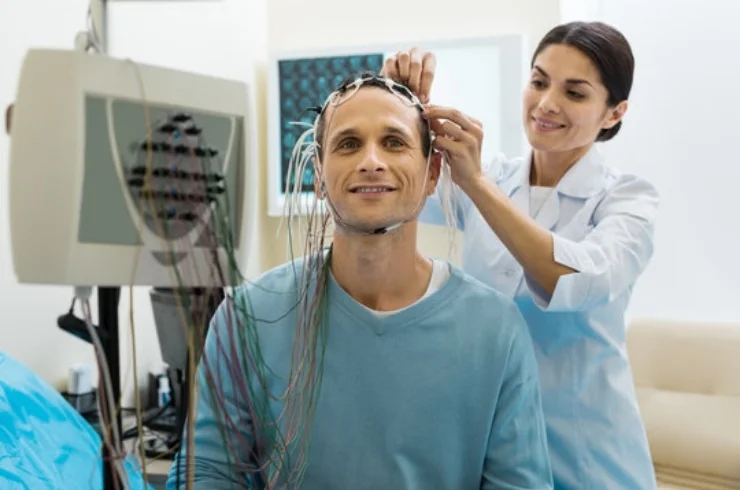
An EEG, or Electroencephalogram, is a safe, painless, and non-invasive test that helps doctors understand how your brain is working. It records the electrical activity of the brain using small sensors (electrodes) placed on your scalp.
Your brain cells communicate with each other through electrical signals, and an EEG captures these signals in real time. It’s a valuable tool for diagnosing conditions that affect brain function.
Why is an EEG Done?
Doctors may recommend an EEG to evaluate symptoms such as:
Seizures or epilepsy
Frequent or unexplained fainting
Memory issues
Sudden confusion
Sleep disorders
Head injuries
Brain infections or inflammation (like encephalitis)
An EEG can also help assess brain activity in people with brain tumors, strokes, or those in a coma.
What Happens During an EEG?
The procedure is painless and usually takes 30 to 60 minutes.
You will lie down comfortably while a technician places small electrodes on your scalp using a special adhesive.
These electrodes record your brain’s electrical signals, which are displayed on a computer for analysis.
You may be asked to relax, breathe deeply, or look at flashing lights during the test to trigger brain activity.
What Can an EEG Detect?
EEG helps diagnose and monitor:
Epilepsy and types of seizures
Sleep disorders like narcolepsy
Encephalopathy (brain dysfunction)
Brain death or coma states
Changes in brain activity due to medications or infections
Advanced Brain Monitoring at Gunnas Diagnostics
At Gunnas Diagnostics, we use modern EEG equipment operated by skilled technicians and interpreted by experienced neurologists. Our goal is to provide accurate insights that help in timely and effective treatment of neurological conditions.
If you’re facing unexplained neurological symptoms, an EEG can be a critical step toward understanding and improving your brain health.
